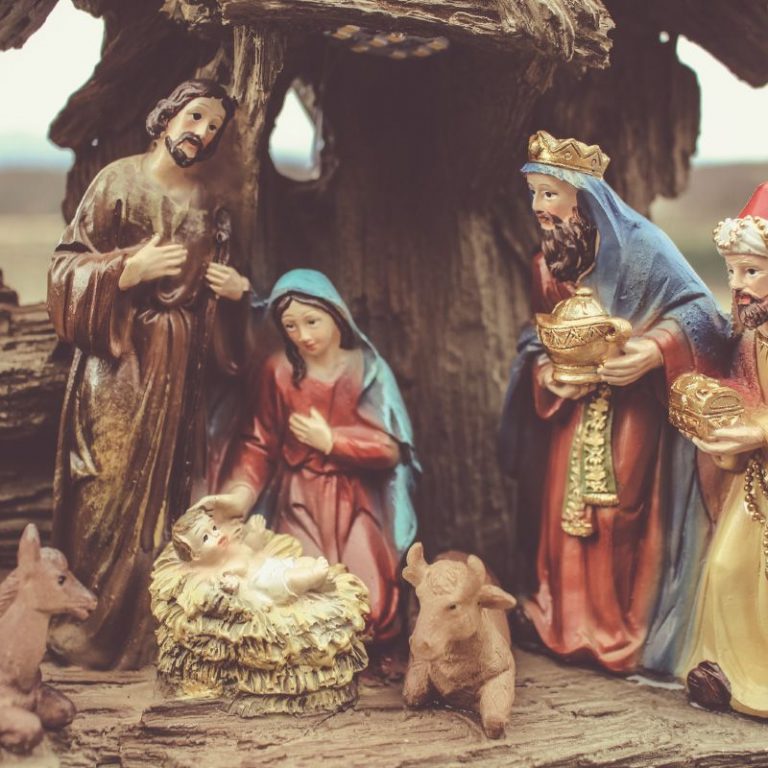Three prophetic dreams found in the Bible book of Daniel predicted history before it was made. These prophecies do not only add credibility to the Bible, but also set us up to understand what will happen in the future.
In the time of the dreams, Daniel was a Jewish exile in the kingdom of Babylon. Through Jeremiah the prophet, God had foretold that the people of Israel would go into Babylonian captivity for seventy years (Jeremiah 25:11). History records tell us that the Babylonian kingdom (605-539 BC) was overthrown by Mede-Persia (539-331 BC). That kingdom in turn was succeeded by Greece (331-168 BC), which later was conquered by the Romans (168 BC-476 AD). The kingdom of Rome would end up divided and be the foundation for Western-Europe as we know it today. We know this to be true as historical facts, but what if we told you that the Bible predicted this succession long before it happened?
Daniel 2
Let’s look at the first of the three prophecies in Daniel we are going to study (Daniel 2:31-35). The king of Babylon has a dream; there is an image with a head of gold; breast and arms of silver; belly and thighs of brass; legs of iron; and feet part of iron and part of clay. At the end of the dream a stone cut without hands smote the image on the feet and broke it to pieces. In the explanation (Daniel 2:38-45) we can read that these parts represent kingdoms.
The golden head is there identified as Babylon, the first kingdom. Followed by the silver, the second kingdom, that represents Mede-Persia. The brass represents Greece, the third kingdom. The fourth kingdom, iron, represents Rome. And what is after iron? Iron mixed with clay, representing divided Rome.
Daniel 7
In this dream (Daniel 7:2-14) we get more details. Here Daniel sees four beasts; a lion with two eagle’s wings; a bear with three ribs in its mouth that raises himself up on one side; a leopard with four wings and four heads; and then a beast with ten horns, on which a little horn comes up later. After these beasts the kingdom of God is established. In the explanation of the dream (Daniel 7:17-27) we can read that these beasts represent kingdoms as well.
The first beast is a lion with eagle’s wings. The wings of eagles represent speed (Deuteronomy 28:49, Jeremiah 4:13, Habakkuk 1:6-8). The Babylonian armies were quick in the conquering mission. Then we have the lion beast. What does a lion represent? We don’t need to guess; the Bible tells us which kingdom is represented as a lion too, namely Babylon (Jeremiah 4:7; 50:17; 50;43,44).
The next beast is the bear with three ribs who raised itself up from one side. This beast represents Mede-Persia. The three ribs here represent the three principal powers conquered; Lydia, Babylon and Egypt. The empire consisted -as seen in the name- out of two groups, the Medes -coming up first, and the Persians -coming up later. This is illustrated by that the bear is raising itself up on one side.
The leopard with four heads and four wings represents Greece. As we have seen, wings represent speed. The kingdom of Greece conquered with incredible speed. No army was as quick as they were. Later, this kingdom got divided into four kingdoms – Cassander, Lysimachus, Ptolemy and Seleucus- that were ruled by four generals. This is symbolized by the four heads.
Then we have the beast with ten horns representing pagan Rome. Between 351-476 AD the Roman empire was split into ten barbarian kingdoms of which seven have developed into the countries of modern Western Europe (Visigoths-Spain, Anglo Saxons-England, Franks-France, Alemani-Germany, Burgundians-Switzerland, Lombards-Italy, Suevi-Portugal). The three other kingdoms where uprooted because of the Roman Catholic Church.
Daniel 8
We end with the third vision (Daniel 8:2-14) where even the names of the kingdoms are literally given. Daniel sees a ram with two horns of which the one coming up later was higher; followed by a he-goat that did not touch the ground, had one horn that broke off and four other horns came up; then a little horn comes forth. In the explanation (Daniel 8:20-26) we get some more details. The ram represents Mede-Persia and the he-goat represents Greece. And the dominion of the little horn is broken without hands.
The ram represents Mede-Persia. The kingdom consisted out of two groups as we said; the Medes and the Persians. The Medes came up first, but the Persians grew stronger. This is represented by the two horns, of which the latter one was higher.
The he-goat represents Greece. The feet of the he-goat did not touch the ground, again representing the speed with which they conquered their enemies. The one horn that broke represents Alexander the Great who was the king of Greece and suddenly died at age 32. Then, as discussed, four generals came in his place.
Then the little horn came up. The text here is translated, ‘out of one of them’ (Daniel 8:9), which raises the question; out of one of what? Here we need to get a little bit technical. Some have suggested it means out of the four horns from the he-goat. However, the word ‘them’ in the original language is masculine, while the horns are in the feminine tense, therefore it cannot refer to the horns. Instead, ‘them’ refers to the winds (Daniel 8:8). This interpretation is confirmed by the rest of verse 9, where it again talks about the winds; the directions of the compass. Since Rome came out of the West, and conquered to the South, East and North, it fits the description perfectly. On top of that, this verb is not the typical word for the growth of a horn as it appears in chapter 8, but instead expresses a movement from one direction of the compass, from one fixed position to another.
The 4th kingdom parallels
Let’s dig a little deeper. Have you seen the parallels specifically between the descriptions of the fourth power? There is no doubt that these dreams also describe the same fourth kingdom.
Between Daniel 2 and Daniel 7
Both contain iron (Daniel 2:33, Daniel 7:7)
Smashes and breaks (Daniel 2:40) devoured, broke in pieces (Daniel 7:7)
Changes form** (Daniel 2:41, Daniel 7:20, Daniel 7:24)
Between Daniel 7 and Daniel 8
Called little horn (Daniel 7:8, Daniel 8:9)
Persecuting powers (Daniel 7:21, Daniel 7:25, Daniel 8:10, Daniel 8:24)
Blasphemous powers (Daniel 7:8, Daniel 7:20, Daniel 7:25, Daniel 8:10-11, Daniel 8:25)
Between Daniel 2, Daniel 7 and Daniel 8
Rules until the end, then supernaturally destroyed (Daniel 2:44, Daniel 7:26-27, Daniel 8:25)
**The fourth beast consists out of two stages, as it changes during its rule. The Roman Empire (pagan) is the first stage (the iron legs / the beast with ten horns) as it later changes and mingles with another power / another power grows out of it. The Roman Empire as a pagan power ended in 476 AD, but it continues in its changed form until God´s kingdom will be established –read more about that power here.
Adding it all together
Each dream has given us different characteristics to work with, but the similarities between these prophecies in Daniel are striking. We can be very confident that these dreams are running parallel to each other and described the same sequence of events. When we compare the explanations and interpretations with the historical records, we also see a perfect match.
Daniel 2
Daniel 7
Daniel 8
History
Gold (Babylon)
Lion (Babylon)
–
Babylon (605-539 BC)
Silver (Mede-Persia)
Bear (Mede-Persia)
Ram (Mede & Persia)
Mede-Persia (539-331 BC)
Brass (Greece)
Leopard (Greece)
He-goat (Greece)
Greece (331 – 168 BC)
Iron + Clay (Rome + changed form)
Beast with 10 horns + little horn (Rome + changed form)
Little horn (Rome)
Rome (168 BC – 476 AD)
God’s Kingdom
God’s Kingdom
–
–
Daniel 2
Gold (Babylon)
Daniel 7
Lion (Babylon)
Daniel 8
–
History
Babylon (605-539 BC)
Daniel 2
Silver (Mede-Persia)
Daniel 7
Bear (Mede-Persia)
Daniel 8
Ram (Mede & Persia)
History
Mede-Persia (539-331 BC)
Daniel 2
Brass (Greece)
Daniel 7
Leopard (Greece)
Daniel 8
He-goat (Greece)
History
Greece (331 – 168 BC)
Daniel 2
Iron + Clay (Rome + changed form)
Daniel 7
Beast with 10 horns + little horn (Rome + changed form)
Daniel 8
Little horn (Rome)
History
Rome (168 BC – 476 AD)
Daniel 2
God’s Kingdom
Daniel 7
God’s Kingdom
Daniel 8
–
History
–
The call to respond
There are two appeals that we want to make to you. First, for your own sake, read the follow-up blog post that zooms in on the little horn power. According to the dreams we have just studied, this power will last until Jesus comes again and the Bible has a lot to say about it. Even Jesus Himself tells us that we should study the prophecies in Daniel, as they will be crucial to understand in the last days (Matthew 24:15). However, many people today are clueless as to who this power refers to. Make sure you understand the prophecies and who it is warning for, so that you can understand the signs of the times and not be deceived.
Second, these prophecies are so rock-solid, that they are a great tool for outreach. As we said earlier, this adds so much to the credibility of the Bible and form a great introduction to lead people to trust this holy book. Make yourself familiar with these prophecies, so that God can guide people to you to give them Bible studies on these historical events.



dSyNauQn
Bonjour.
Est-ce que vous pouvez partager l’article sur la marque de la bête parce que l’article a été supprimé ou effacer.